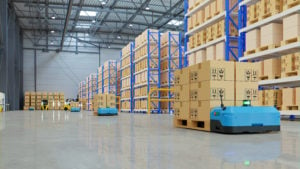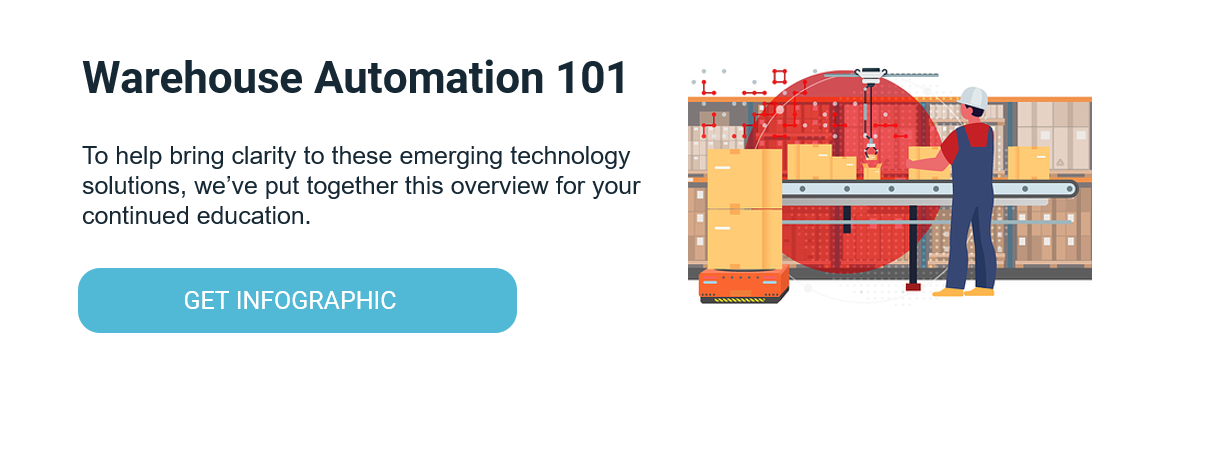The Future of the CSC: Automation for Healthcare Supply Chain Logistics

As McKinsey & Company noted in its recent article “The Next Frontier of Care Delivery in Healthcare,” the industry must innovate to thrive. While this article does not specifically touch on the supply chain, I believe healthcare supply chain logistics will be a fundamental piece of a health system’s success in the next wave of the industry evolution.
Supply chain disruptions, staffing shortages, cost constraints and other factors are driving more health systems to establish a consolidated service center (CSC) with automation functionalities similar to what is seen in state-of-the-art e-commerce and third-party logistics (3PL) warehouses. The reason for this is because the need for picking items in the warehouse is coming down to the “each” level with just-in-time (JIT) availability to achieve greater precision and efficiency of supplies to the patient’s bedside, operating room and various other locations within hospitals.
Keep in mind that while warehouse automation is becoming more attractive and accessible to health systems, it isn’t necessarily right for everyone. Here are three key questions to ask yourself to help determine if automation is right for your CSC, and three additional questions to help guide you in selecting the right automation technology and strategy your healthcare organization needs.
3 Questions to Determine if Automation Fits into Your Healthcare Supply Chain Logistics
1. What Is Your Risk Tolerance as an Organization?
Automation, similar to other technology investments, is a powerful tool, but it can also disrupt your business. Understanding the appetite for such potential impacts is paramount before embarking on such a path. Any automation project, large or small, will impact your warehouse from your technology to labor and especially workflows. The question you must be able to answer is: what is your organization’s historic track record when it comes to change? Are changes embraced at the executive level and how do they translate throughout the organization? Before embarking on a journey toward automation within your healthcare supply chain logistics environment, ensure your organization and leadership fully grasp the potential changes this technology can have on your health system.
2. Which Workflows Do You Want to Automate and Why?
Supply chains have embraced automation for centuries — robots have played a major role when it comes to manufacturing processes. In the past few decades, we have seen advanced automation making greater inroads in the warehouse and fulfillment spaces. Starting with conveyors, warehouses have looked for more automation to address key workflows. From picking, putting away, to cycle counting and even removal of dunnage, automation has assumed a larger role within the warehouse.
When it comes to investing in the plethora of automation solutions, to ensure success, you must identify the key workflows you are looking to address. Warehouse professionals must prioritize which workflows to focus on and, most importantly, which workflows should be left as is, whether that is in the form of reducing dependency on labor, enhancing efficiency or improving order accuracy. As warehouse automation gains momentum in the market, rest assured there is most likely an automation flavor for almost every imaginable workflow. But to ensure success for your warehouse, start to identify which workflows are the most relevant and impactful for your health system.
3. How Much Can You Spend and How Do You Want to Pay For It?
Warehouse automation is an investment, requiring both time and capital. It sounds obvious; however, one must have a clear understanding of the monetary budget and time commitment for such a project. Determine if this will be a capital project or if you are more interested in an operating model. Certain automation projects lend themselves more to one financial model over the other. Have a clear financial and time budget when embarking on such a strategic initiative. Make sure you communicate this clearly both internally and with your service providers.
3 Questions to Select the Right Type of CSC Automation for Your Healthcare Supply Chain Logistics
1. Is This a Greenfield or Brownfield Project?
Not all warehouses are equal and not all automation projects are the same. Whether you are looking to retrofit automation into an existing warehouse (brownfield) or if you are building a new facility (greenfield), it will have a major impact on which automation to consider. Adding automation to an existing warehouse will take on an increased degree of complexity — how can you add automation without disrupting the existing warehouse functionality? This will be the largest challenge faced. When it comes to greenfield, there is a potential to design the warehouse specifically around the automation selected. This opens great opportunity for your healthcare supply chain logistics, but also places a greater emphasis on which technology to invest in. If you are building around the automation, you must be prepared to live with this for the long term.
2. What Does Your Supply SKU Spread Look Like?
Automation selection depends in large part on what products you are warehousing. Dimensions, weights and other handling characteristics play an important role in determining what type of solution you should consider. If you are shipping items that have a wide range of dimensions — from band-aids to heart catheters — then a system such as a cube automated storage and retrieval system (ASRS) is not for you. If you are shipping full pallets of IV fluid, then a small cobot (collaborative robot) will not be able to handle the freight. Your SKU profile will play a large factor in what types of automation you should consider.
3. Does Your CSC Contain Pharmacy Items?
From a healthcare supply chain logistics perspective, will your CSC be supporting pharmacy needs? This type of SKU will also carry other parameters with regards to how they are stored (temperature variables) as well as how they are handled (government regulations.) While the first will impact the automation options, the latter will impact how you place your full-time employees (FTE) within the warehouse.
Final Evaluation
Automation holds much promise for warehouses, but it also remains a field in its infancy. With many technologies in similar stages, there remains uncertainty and more questions than answers. When selecting the appropriate automation solution for your warehouse, it’s equally important to consider the impact on your healthcare supply chain logistics. With that in mind, we encourage you to reach out to us so that we may share from our insights and experience with our customers.




